Story and photos – Rebecca Ashton


Why is German dressage so good? Basics.…you’ve heard it all before. What you see when you watch the best-of-the-best train is basics. This attention to detail and self discipline is just so perfectly tuned.
This is what we saw at Dorothee Schneider’s Masterclass. Each combination received the same message from the German Olympic Gold Medalist – straighten the horse, keep the outside rein, not so much inside rein, create the rhythm with your hips, keep him straight. Correct dressage – the skill is maintaining it at all times.
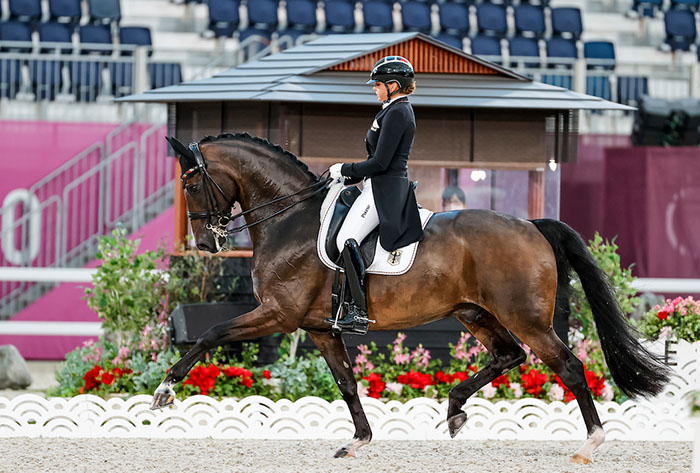
Dorothee and one of her many stars, as a Bundeschamps winning young horse, and Olympic medal winner, Showtime FRH.
Dorothee told us,
“I want to show you my concept of developing horses. I look for a combination of good suppleness and I need to be able to straighten the horse. The first step is to stretch the horses forward and down, but not just with the rein. I need to have a straight horse stepping the hind legs forward to the rein. It can only go to the contact if it’s balanced behind me.”
“The next step is the motivation. The horse should have the opportunity to go into the paddock. The possibility to chill and move as they want, then they can concentrate when you work them. The rider has to be sensitive to feel any problems in the horse – the contact between the rider and the horse is important. When the horse does something well, pat it so the next day gets better and better. You have to mentally have them on your side. This all begins with the basics. Then the horse can use its own body and balance the movements and then you can develop into riding a good shoulder in, then half pass with good balance and contact.”
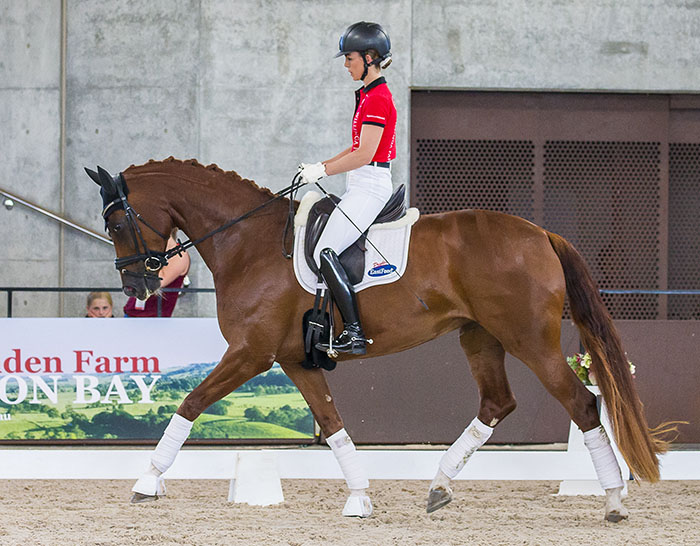
Robbie and Fleur de Lys
The first two riders of the Clinic were Robbie McKinnon on Hollands Bend Fleur de Lys and Lewis Newton on a very spooky Keep Sake, both four-year-olds.
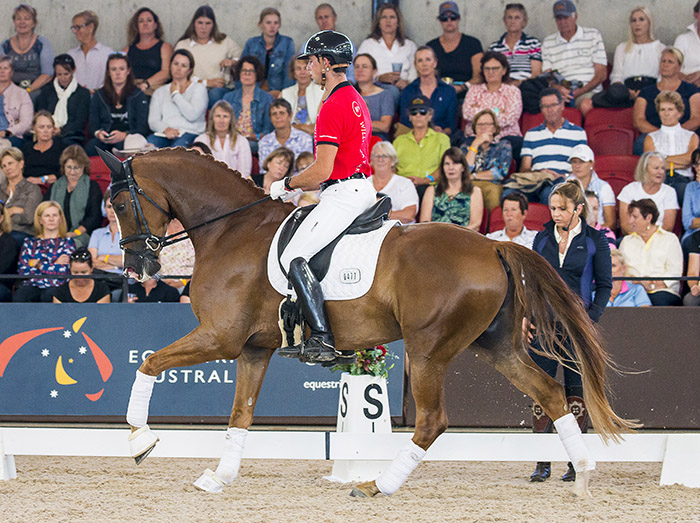
Dorothee set the template for what would be every session. “Let them have a look, and get familiar with the arena – Lewis, Give him a pat. Give him confidence. Maybe ride behind Robbie.”
story continues below advertisement
“We start with rising trot. It’s very important to warm the horse up and stretch it from the hind leg to both hands. Then the rider needs to be sensitive to find the right rhythm for that particular horse. If it’s too slow, he can’t take the hind leg over the back to the mouth. If it’s too fast, there’s no swing.”
“Don’t pull your hands across the horse’s neck, give the horse the opportunity to find the contact in both reins. Also ride on the second track and the quarter line to feel better the balance. The horse has one hollow side and one crooked side, you have to fix this. Robbie’s horse is hollow to the left so we have to get the left hind leg under, and the right shoulder out a bit more. When you rise, take the hind leg with you. We have to manage the inside leg, and the outside rein. We try to help young horses to find the line, straight or bent, but with the contact on the outside rein.”
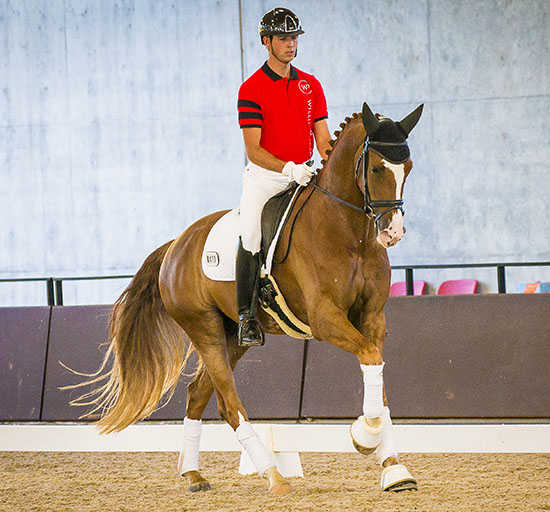
Then Lewis began with his spooky chestnut. Again Dorothee encouraged getting the rhythm from the hind leg to the bit and what would become common thought the evening, keeping the riders off the track and making more use of the second track and quarter line.
“Look at the ears that he’s straight in front of you. Really work on getting that outside rein contact and getting the inside hind leg to go on the line off the inside leg. Try to take the hind leg with you when you rise to get a little bit more swing.”
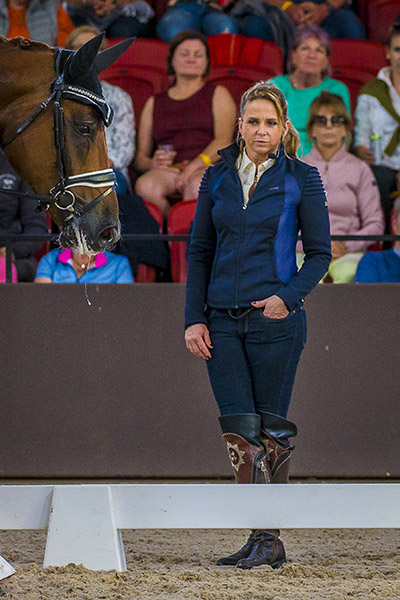
“Balance, rhythm. straightness. Stabilise the hind leg under the body. They are the points of the four-year-olds. Make the strides with your sitting in the canter. Show the horse by riding forward. Think a little bit about shoulder in on the circle line. Canter to trot, ride the rhythm in the transition to help him.”
“Then think just a little shoulder in the rising trot because he’s a little bit tense. Try to stretch him just a little bit downwards. It’s not so easy to manage a tense horse. Give him a pat. Take the rein a little wider to show him the way to stretch, but always with contact. Not without contact. Always the positive contact.”
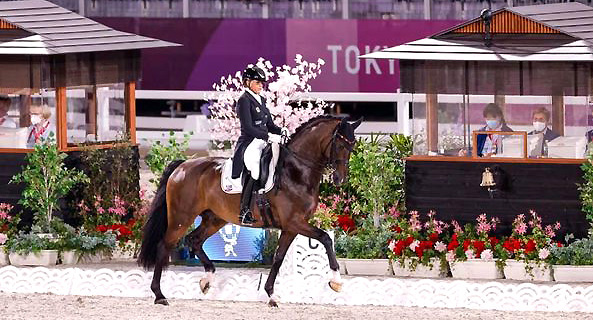
Read more:




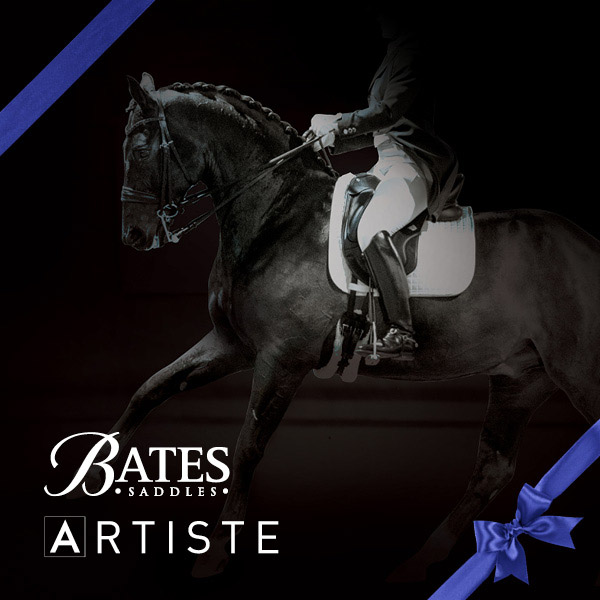
LOVED this post – great tips for us riding on our own. Thank you!
Dorothee is a great clinician.